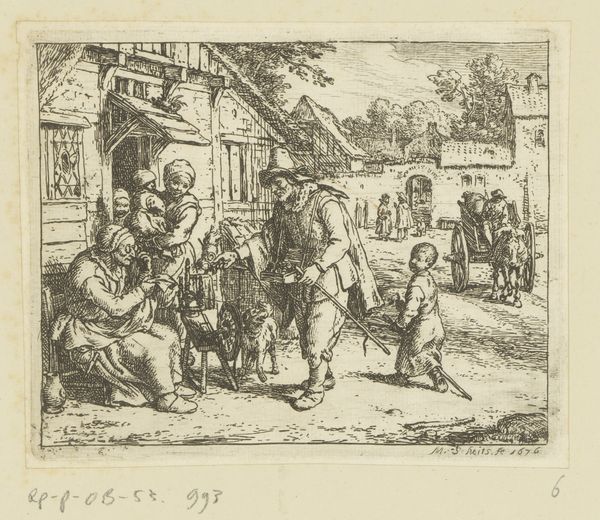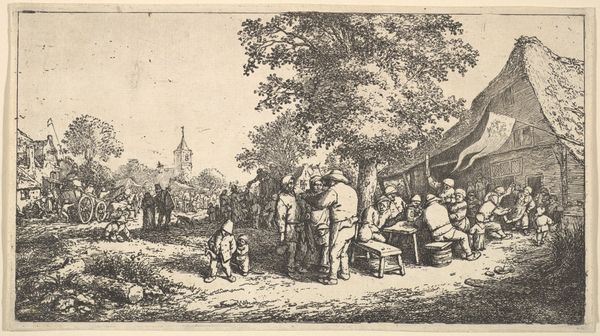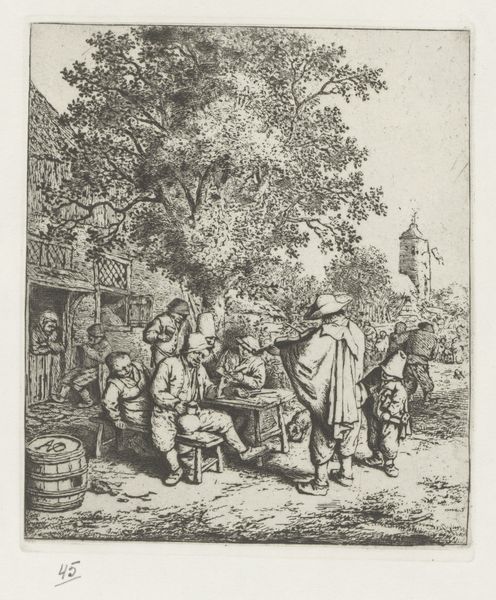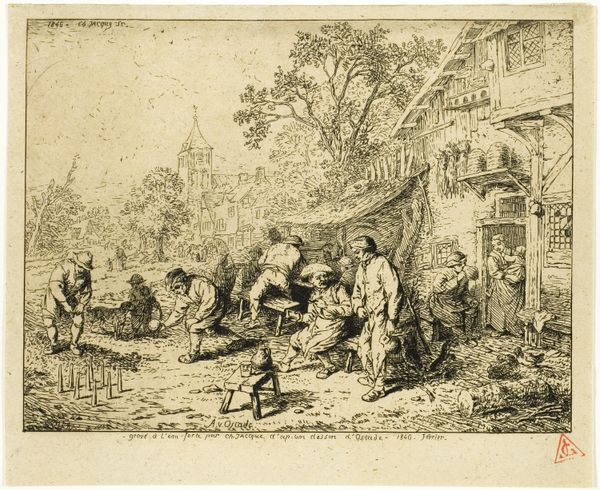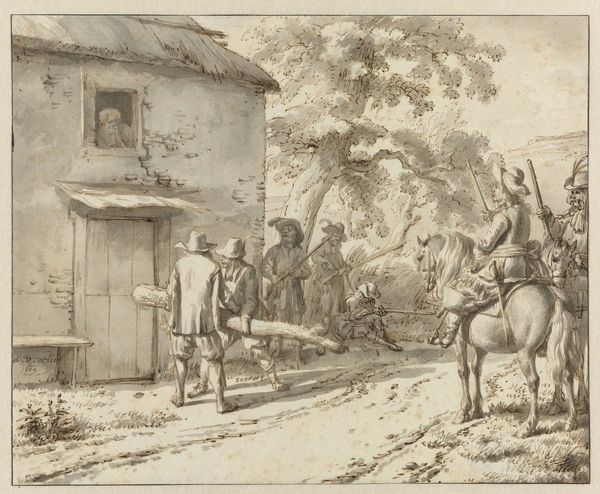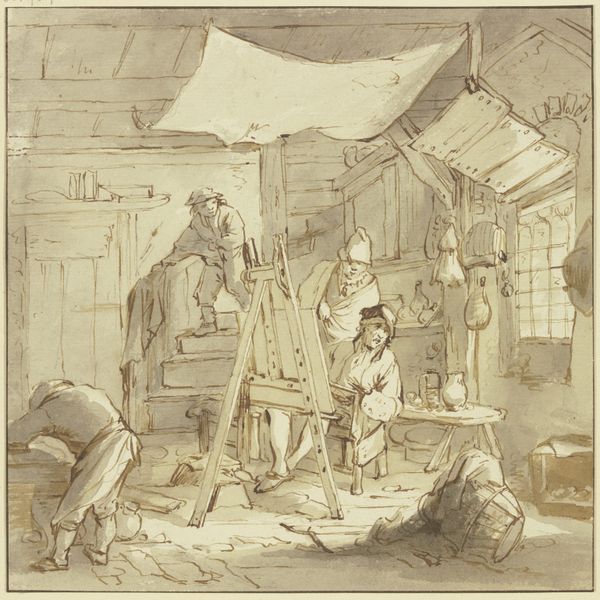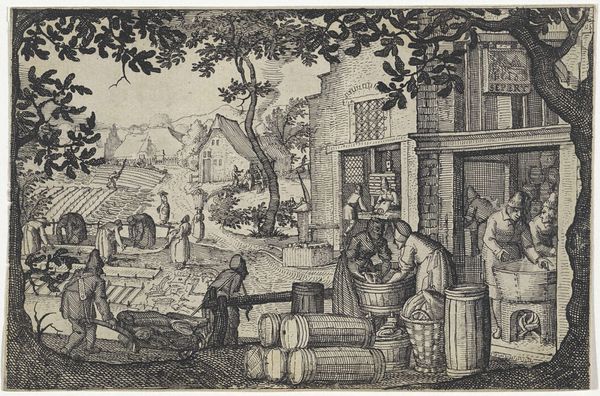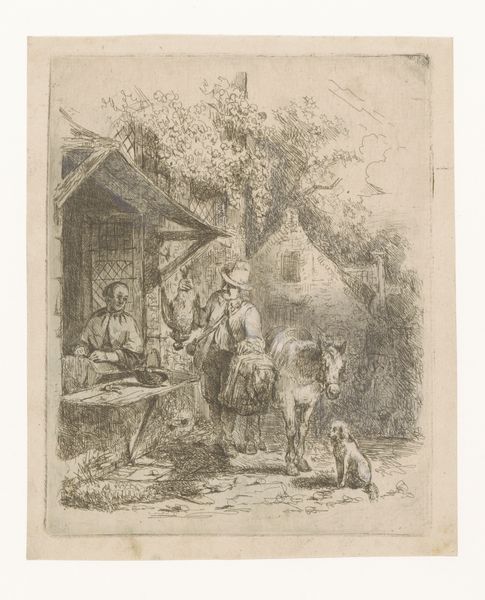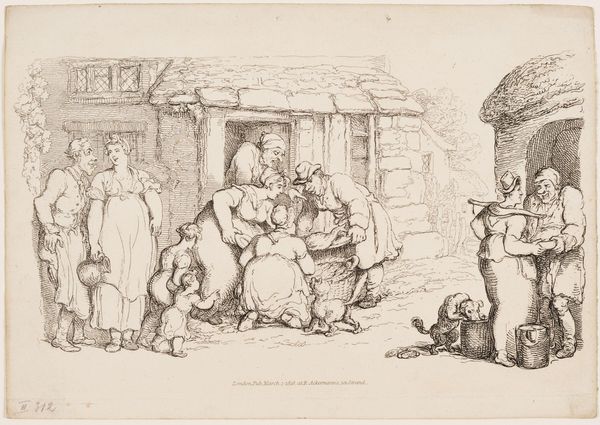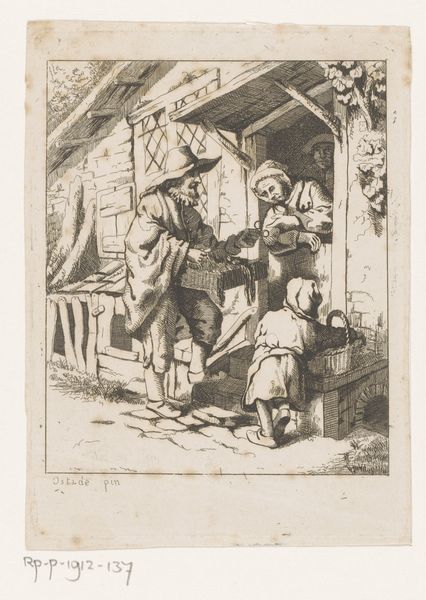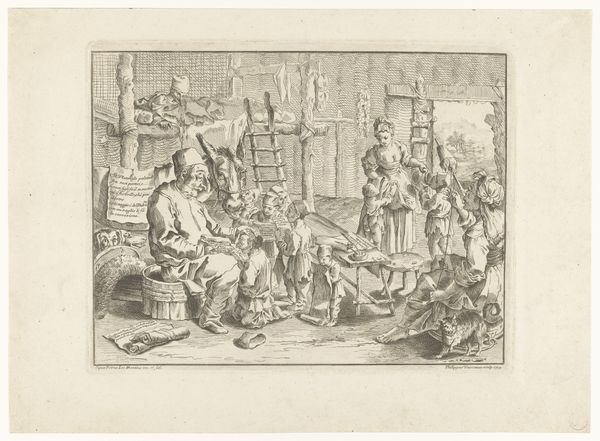
print, etching
#
narrative-art
#
dutch-golden-age
# print
#
pen illustration
#
pen sketch
#
etching
#
old engraving style
#
figuration
#
line
#
genre-painting
Dimensions: height 160 mm, width 204 mm
Copyright: Rijks Museum: Open Domain
Curator: Look at this etching, titled "Two Street Musicians Before a House," created sometime between 1735 and 1770 by Nicolaas Albrecht. The scene hums with life. Editor: My first thought is how it encapsulates the spirit of everyday life. The lines are almost frenetic, conveying energy, but there is a strange stillness too—a capture of a single, suspended moment. Curator: Indeed, the details reveal so much about Dutch Golden Age society. Street musicians, common figures, bring music to what looks to be a humble dwelling. The building seems almost to sprout directly from the earth, suggesting a deep connection to the land. Editor: Note, also, how the artist renders those characters and objects: the home with its distinct window frames, the rough textures of the clothing worn by the musicians and onlookers. Those recurring hats worn by almost all the figures – can we decipher meaning or status from them, do you think? Curator: Possibly. Head coverings often indicate profession, origin, or societal status. Looking closer, the man in the doorway might represent a gatekeeper of sorts, symbolically presiding over boundaries between public and private life, maybe even moral life as his neighbors expose their children to public performance. The expressions he projects might hint at what he thinks of the musician's actions. Editor: That adds an interesting layer. Are they welcomed or merely tolerated? Does music here represent a disruption or a celebration? The positioning of the figures and architectural structure feels so precise, almost stage-like. I keep wondering if there is commentary here, social criticism delivered softly through these images and symbols. Curator: Certainly, Albrecht engages in a familiar dynamic from this period: critiquing from within, not necessarily advocating radical change. This image speaks to social structures, daily life, and perhaps to art's role within it all. I sense a familiar tension between order and disruption embedded in this humble presentation. Editor: The print truly pulls us in. It acts as an archive—a way to explore the era and social codes beyond simply pretty landscapes or stoic portraits. Curator: It provides so many threads to unravel, inviting us to delve into the society and assumptions that shape this vivid tableau.
Comments
No comments
Be the first to comment and join the conversation on the ultimate creative platform.
